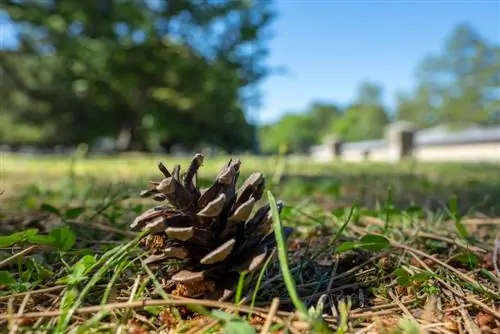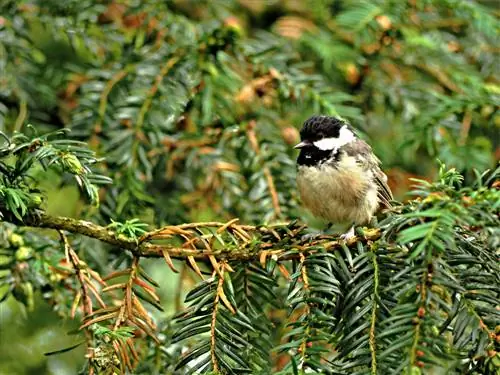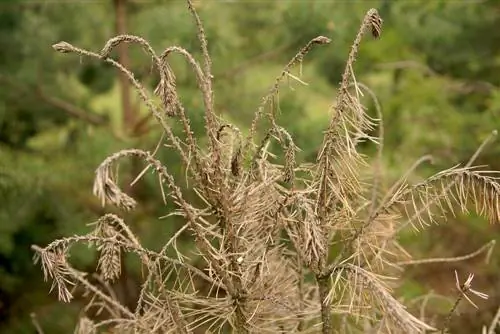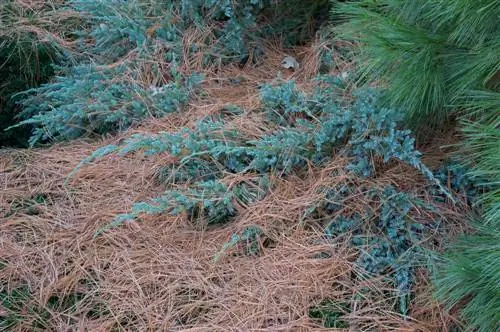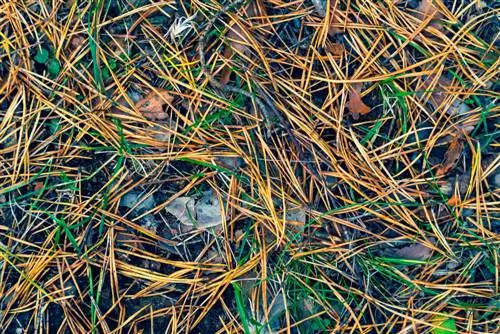- Author admin [email protected].
- Public 2023-12-16 16:46.
- Last modified 2025-01-23 11:21.
Even in elementary school, children learn that conifers retain their needles even in winter - with one exception, the larch. This turns its soft needles beautifully yellow in autumn and then sheds them. However, various causes lead to evergreen species also losing their needle coat. In this case, precise clarification of the causes is necessary.
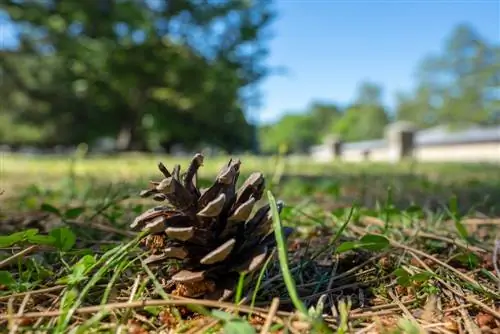
Why is my conifer losing its needles?
A conifer loses needles due to dryness, waterlogging, lack of nutrients, after (re)planting, pest infestation or limited root space. To resolve the problem, you should identify the cause and take appropriate measures such as irrigation, drainage or pest control.
Conifers also shed old needles
However, shedding the needles is not always pathological, but sometimes completely natural. The needles of conifers are shed at regular intervals anyway, so that the tree can form new needles. Since this process occurs continuously, it is only occasionally noticeable - for example, when a tree sheds a particularly large number of old needles in one year. How often this happens depends on the specific tree species: pine needles, for example, are renewed every three to five years, while pine needles can remain on the tree for up to eleven years.
Causes of pathological needle shedding
However, if the tree suddenly drops numerous needles that previously turn yellow to brown and possibly also shows other causes of the disease, then there is a more serious problem behind it. Finding the exact cause is not always easy.
drought
Many conifers shed their needles during periods of long drought, which is especially the case in late summer. But dry frost (especially in combination with bright sunshine!) and infrequent watering of potted plants also lead to needles being dropped due to a lack of water. Solution: Water the conifer thoroughly.
Waterlogging / Compacted Soil
But the opposite can also lead to needles being dropped if the tree is permanently in soil that is too moist. There are many reasons for this: frequent watering, heavy rain, lack of drainage, compacted soil - in this case the only thing that helps is to provide drainage subsequently and to sustainably improve the soil.
Nutrient deficiency / over-fertilization
Coniferous trees need to be fertilized carefully because they are very sensitive to both an under- and over-supply of nutrients. This also applies to pollutants from the air, as these are stored in the leaves and can literally poison the tree from there - after all, the needles often remain on the tree for years.
Tree does not grow after (re)planting
A needle drop is not uncommon after planting or transplanting and indicates difficulties with growth: the tree often has to feed the upper parts of the plant that have not been cut back with a reduced root ball, which it cannot do. This can be remedied by pruning and watering thoroughly.
Pest Infestation
Plant lice and spider mites in particular often cause the needles to brown and drop.
Tip
Another cause of discoloration and shedding of needles is the limitation of the root space, for example by walls or foundations. In this case, the tree can often no longer absorb enough water and nutrients.

